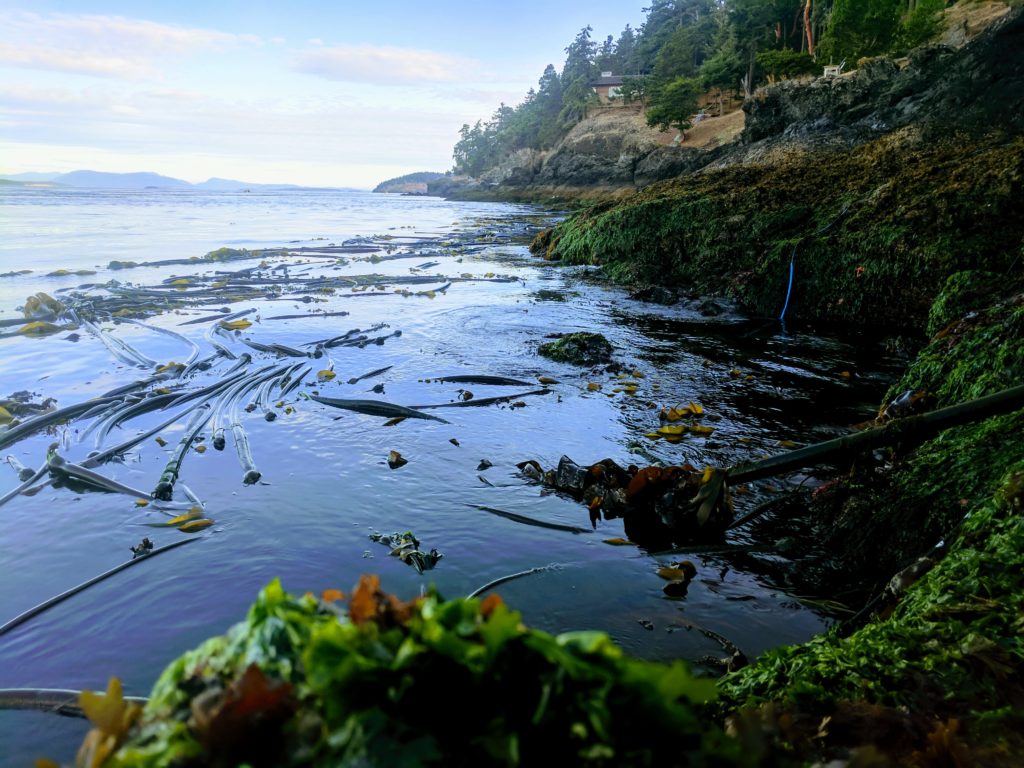
After coming up with a new deployment scheme that we believe will be optimal for replacing or establishing Orcasound hydrophone nodes in 2018, Val pulled another ITC 4066 hydrophone with his custom pre-amp out of the garage and wired it up. Leslie and Val rowed it out through the kelp and lowered it over the side about 30 m from the existing ITC. Upon returning to shore they were pleased to discover that it was working well.
So, now there is a second, back-up calibrated hydrophone at the Orcasound Lab (located on the west side of San Juan Island just south of Snug and Roche Harbors) and we can be sure that we’ll be able to continue to monitor underwater sound pressure levels during the ECHO ship slow-down trail — even if one of our hydrophones fails.
We are also continuing to develop a mooring system that is cost-effective, easy to construct with DIY supplies, robust, heavy enough to hold position in the current, but light enough to be hoisted by hand overboard and deployed from a small boat (without the cost of a diver). Here is a prototype painted with blue anti-fouling paint.
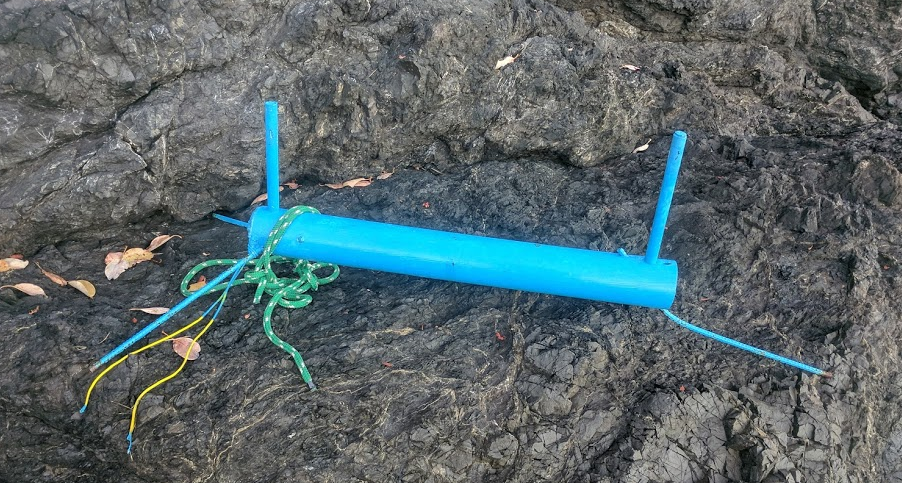
The main idea is to be able to provide a DIY deployment guide along with two hydrophones. For listening (non-research) hydrophone nodes, the two hydrophones will be redundant listening-grade hydrophones spaced about a meter apart — to enable localization by the human brain when signals arrive underwater with a time difference that is about what our ears experience in air. For scientific nodes, the one hydrophone will be a calibrated research-grade transducer while the other either be a redundant one, or if cost is an issue, a lower-cost back-up.
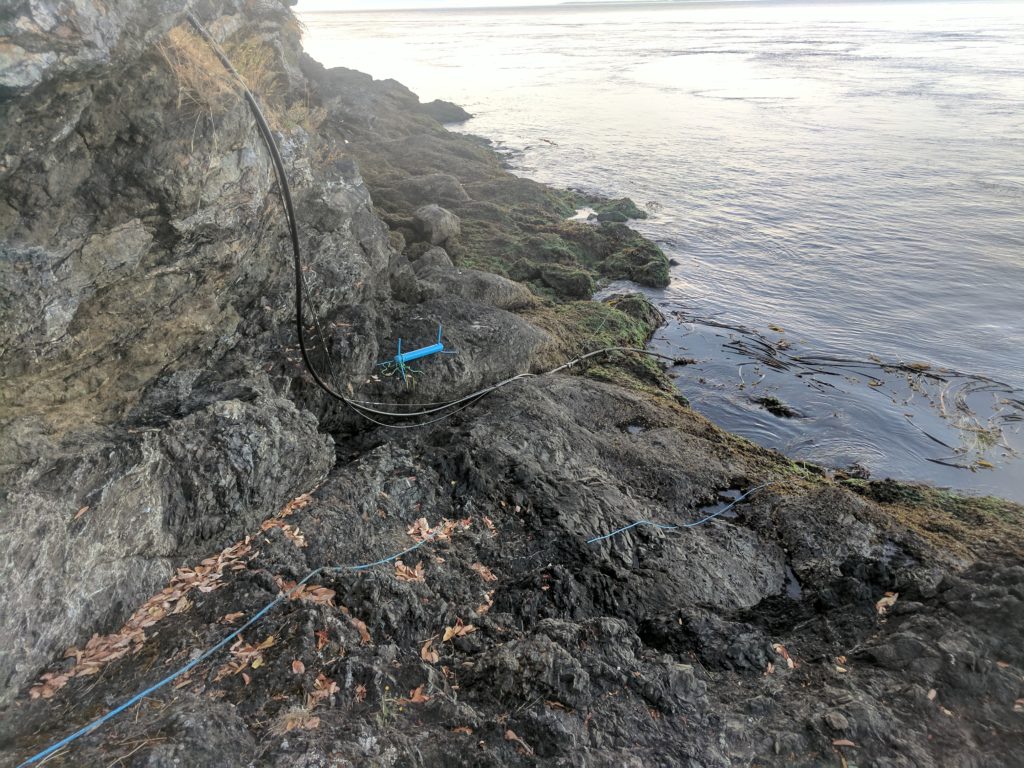
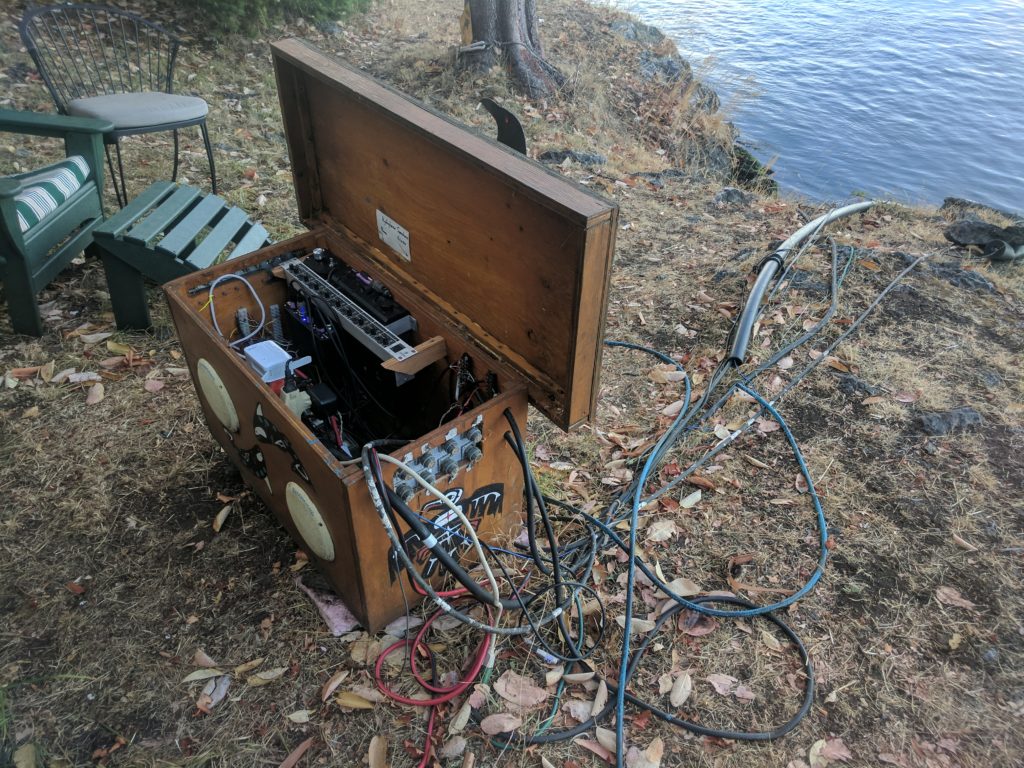
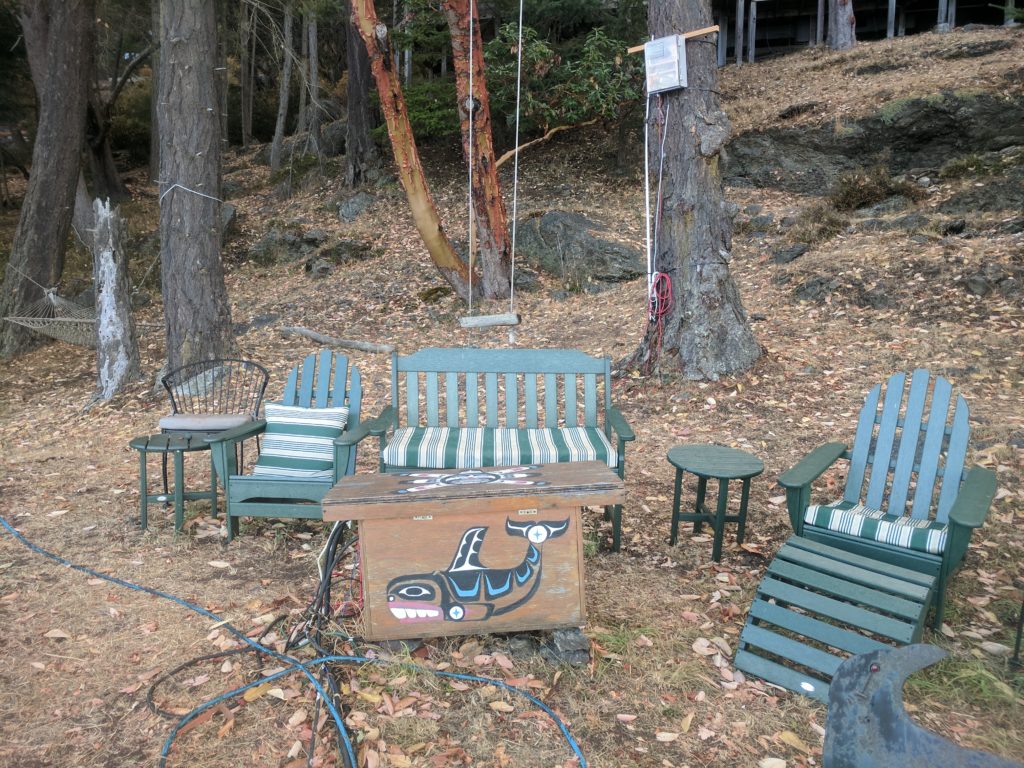
One thought on “Back-up calibrated hydrophone deployed”